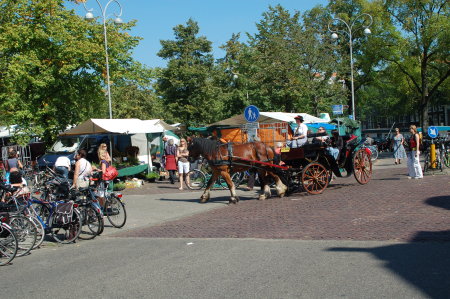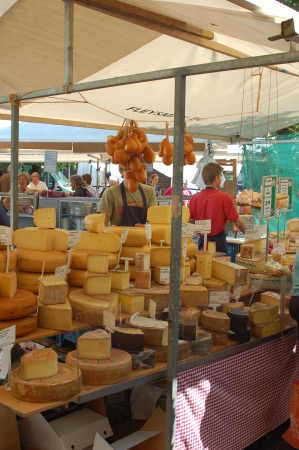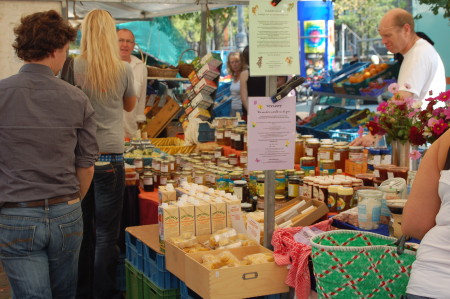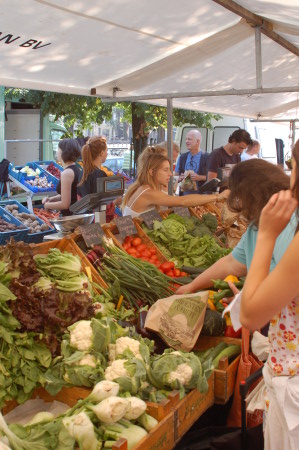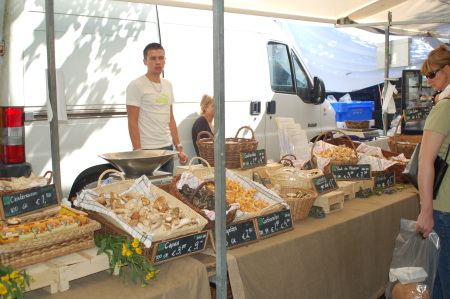I’m finally back home and have a few minutes to make a post about our Oxford get-together.
The day started off with some coffee and small talk. Since the weather was so nice we moved outside to give the presentations in the botanic garden itself. It was really a wonderful setting for the presentations.
Ben from Real Seeds kicked things off with a real eye opening presentation about the history and importance of seed saving. In the picture you can see him making a timeline.
The recurring theme from Ben is that he wants everyone to save their own seeds. If you need some seeds to start with, he’s quite happy you buy these from him if you want, but he would really prefer you saved your own seeds so it wasn’t necessary to buy any more. At the moment business is good, and they don’t really want to expand or sell more seeds. You can do much more to further the goals of the Real Seed Catalogue by saving your own seed than you can from buying more seeds from them.
Real Seeds has seed saving information on their website, released under a Creative Commons License. You are welcome to copy and redistribute this information almost any way you want, as long as you don’t charge money for it.
After Ben’s presentation, I talked a bit about my garlic.
The last presentation was Simon (above), who discussed allotment culture and the importance of having a good shed. His presentation included a mini-quiz game with prizes and a poem. In all, very enjoyable!
After the presentations we had lunch. Cat brought a wonderful home made apple pie (with apples from her neighbor), and many others brought samples of things from their gardens. Ben brought some exploding cucumbers, which we dissected and learned how they worked.
After lunch was the seed exchange. I had garlic to offer, and many others had self saved seeds. Kate brought seeds from Wilson in Singapore, as well as from her own garden. Thank you Wilson! Ben had exploding cucumber seeds on offer.
We then spent a couple of hours walking around the gardens. Among other things we saw a number of plants some of us have in our own gardens. There was an impressive display of Andean tubers, including mashua and yacón. There were a number of quinoa and amaranth varieties. There were some heirloom tomatoes in the greenhouse.
Thanks goes out to everyone who took the time to come and make this a complete success!
A special thanks goes out to Ben who travelled from Wales to speak to us, and to Emma who helped with the setup and organization.
You can see posts others made by following the links below:
Daughter of the Soil
Veg Plotting
Spadework
Fluffius Muppetus
Soilman
Manor Stables Vegetable Plot
Hills and Plains Seedsavers
MustardPlaster




